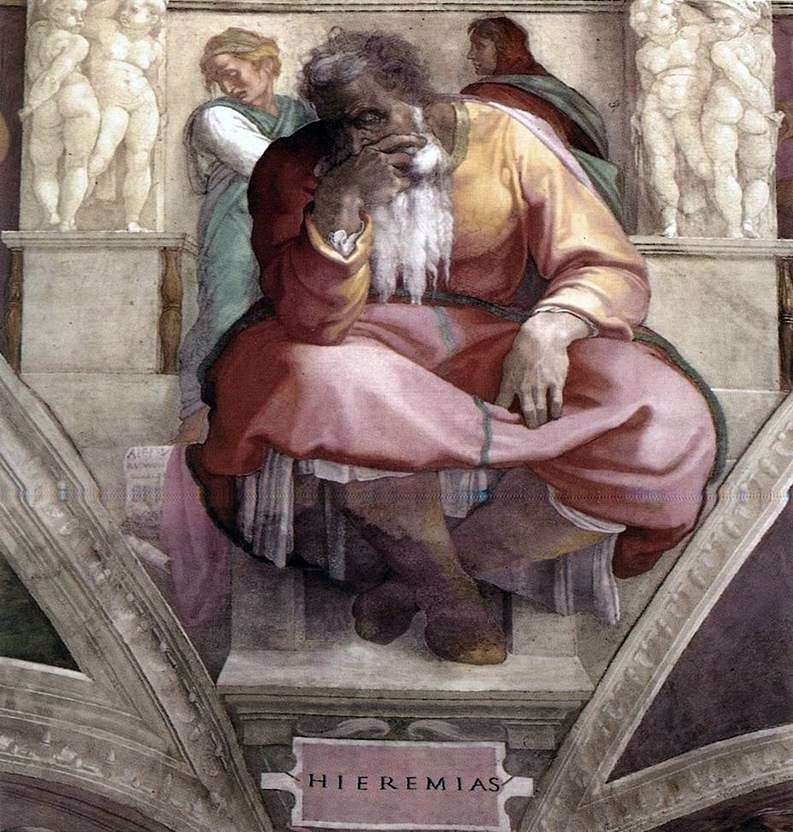
Fresco by Michelangelo Buonarroti depicting the prophet Jeremiah. The painting of the ceiling of the Sistine Chapel of the Cathedral of St. Peter. Jeremiah, Hebrew prophet 7 – early 6th century BC e., the second of the four great biblical prophets. The sermons and sayings of Jeremiah, written by him and his companion Baruch, constitute the Book of the Prophet Jeremiah and the Lament of Jeremiah.
The non-canonical books include the Epistle of Jeremiah. The text of the Book of Jeremiah in the version of the Masorets and the Greek translation of the seventy interpreters differs considerably. As it is possible to restore the text of the Book, the prophet Jeremiah was from Anaphora near Jerusalem.
He began to prophesy about 626 BC. er He had a chance to survive the persecution of the people, who did not believe his prophecies, the Babylonian captivity, after which he stayed in Jerusalem, ruled by the governor Gedole, a revolt against Gedaliah, after which the prophet found himself in Egypt with the fleeing rebels. The concept of the New Testament, which instead of the Old written on the tablets, will be written in the hearts of the people, appears in the Book of Jeremiah for the first time.
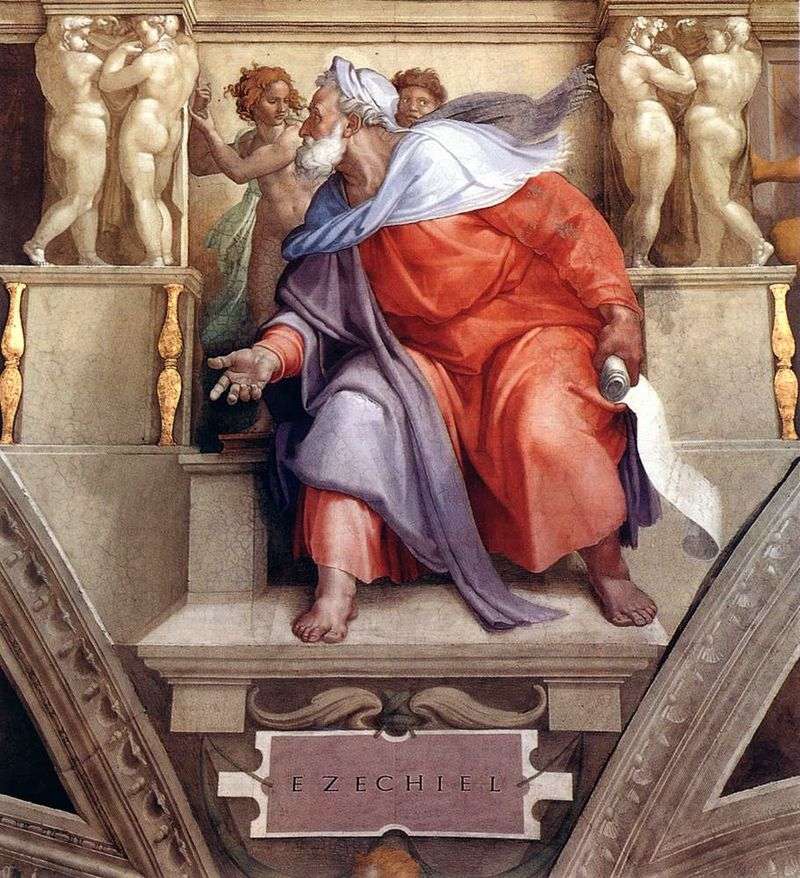 The Prophet Ezekiel (Fresco) by Michelangelo Buonarroti
The Prophet Ezekiel (Fresco) by Michelangelo Buonarroti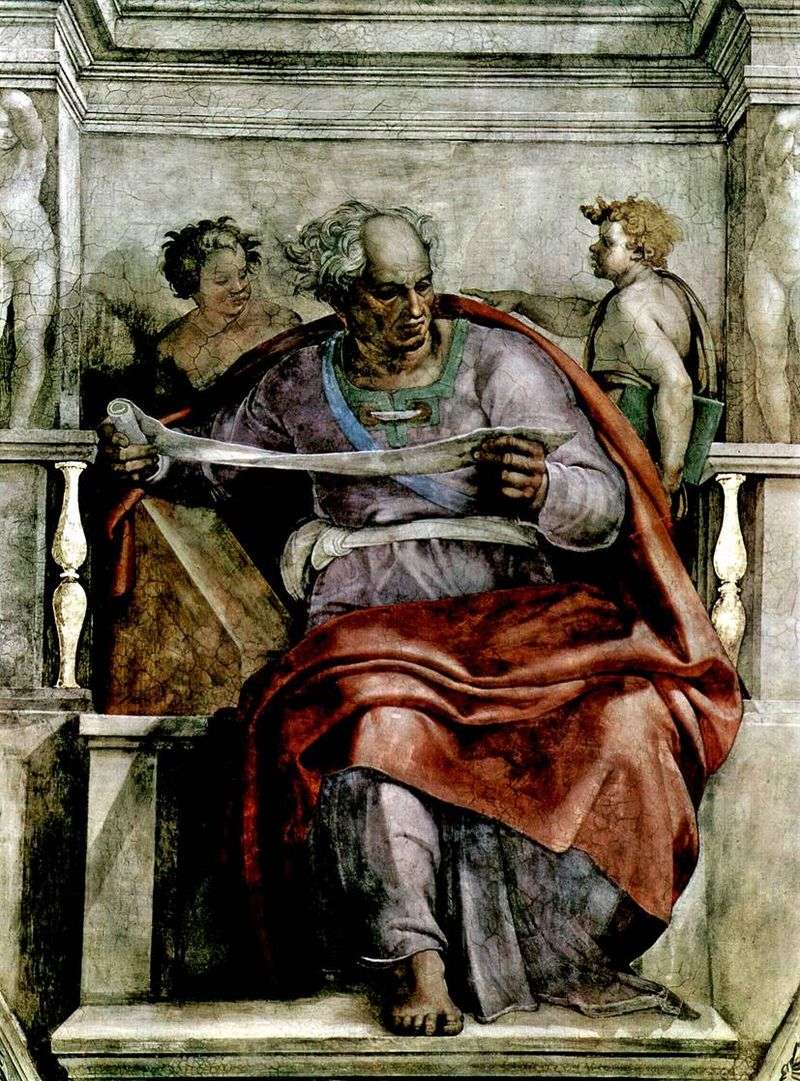 The Prophet Joel (Fresco) by Michelangelo Buonarroti
The Prophet Joel (Fresco) by Michelangelo Buonarroti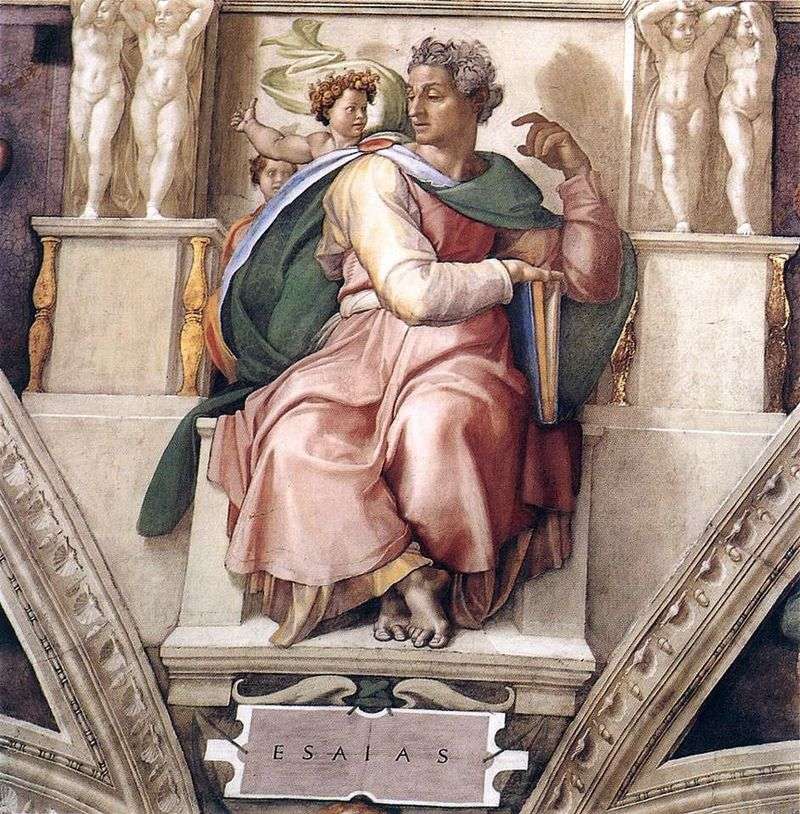 The Prophet Isaiah (Fresco) by Michelangelo Buonarroti
The Prophet Isaiah (Fresco) by Michelangelo Buonarroti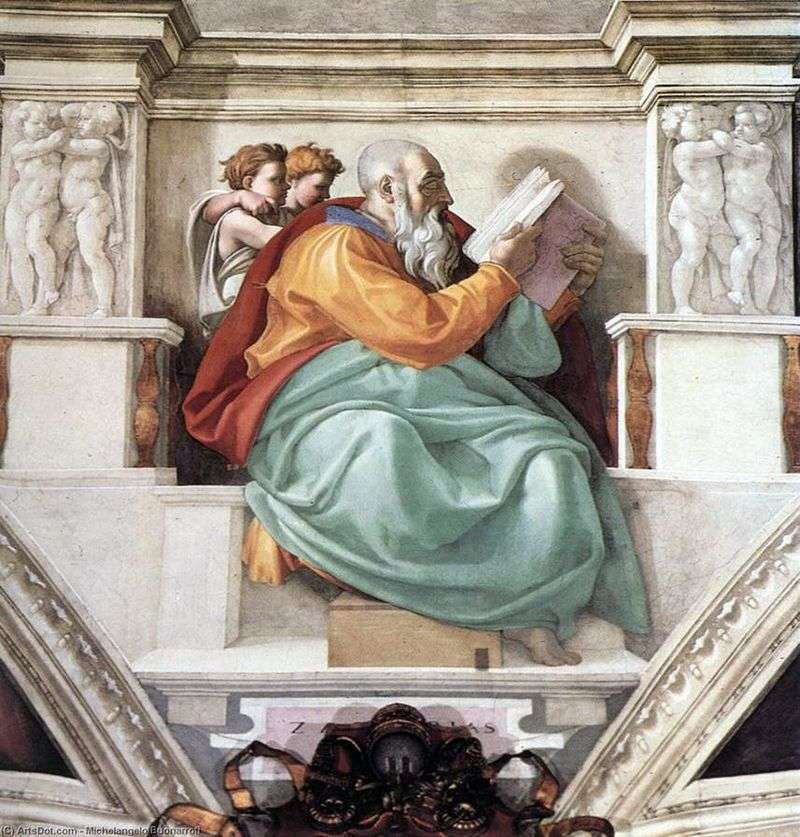 The Prophet Zechariah, Father of John the Baptist (Fresco) by Michelangelo Buonarroti
The Prophet Zechariah, Father of John the Baptist (Fresco) by Michelangelo Buonarroti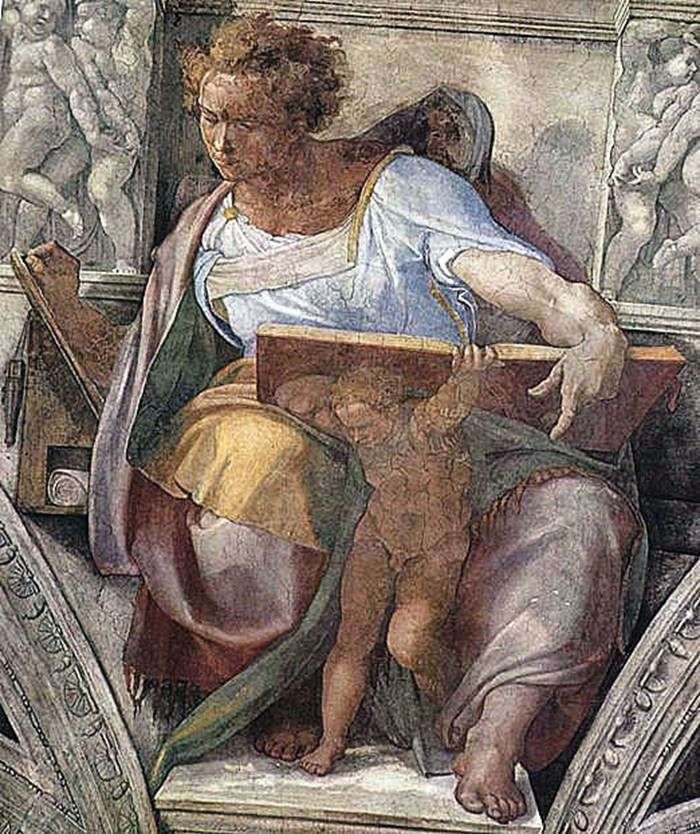 Prophet Daniel (Fresco) by Michelangelo Buonarroti Buonarroti
Prophet Daniel (Fresco) by Michelangelo Buonarroti Buonarroti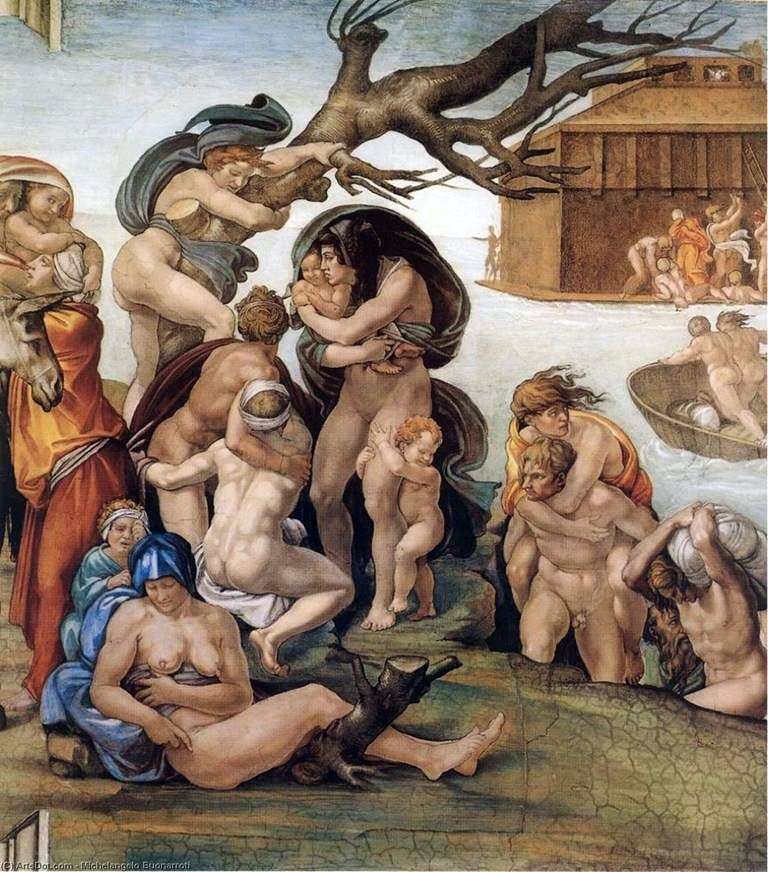 Flood, a fragment of the painting of the Sistine Chapel (fresco) by Michelangelo Buonarroti
Flood, a fragment of the painting of the Sistine Chapel (fresco) by Michelangelo Buonarroti Detail of the Sistine Chapel painting (fresco) by Michelangelo Buonarroti
Detail of the Sistine Chapel painting (fresco) by Michelangelo Buonarroti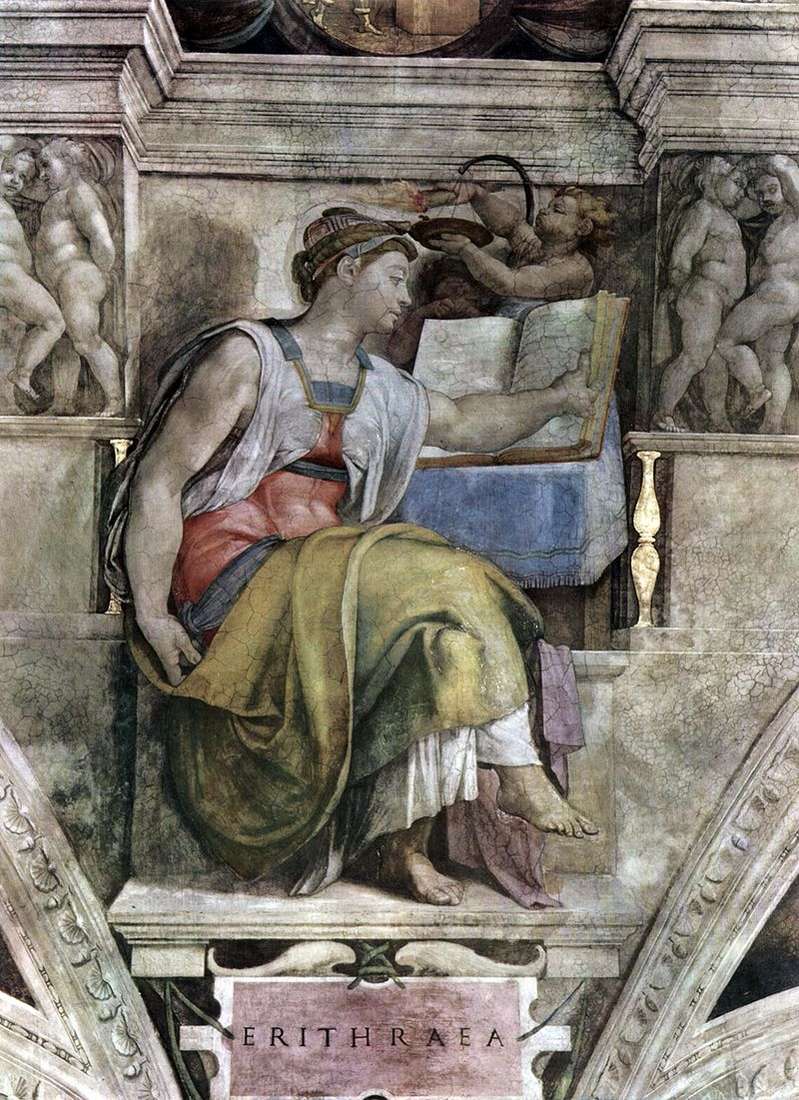 Eritrean Sibyl (fresco) by Michelangelo Buonarroti
Eritrean Sibyl (fresco) by Michelangelo Buonarroti